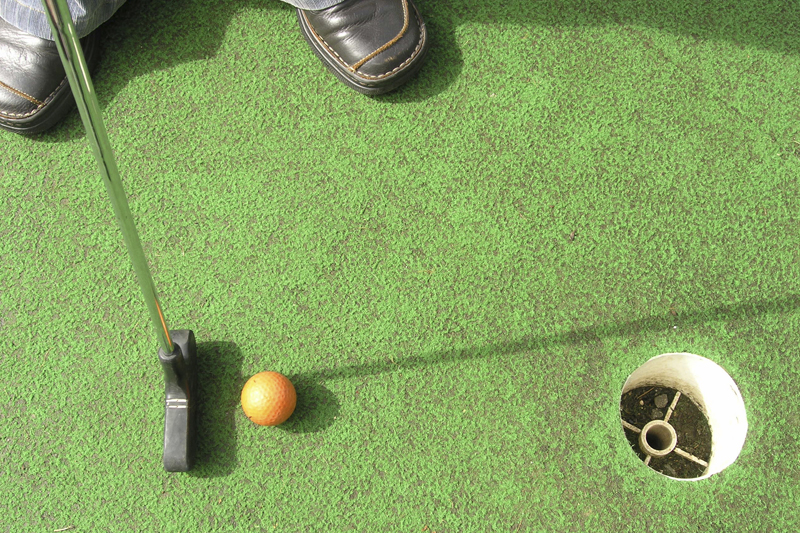If you are a serious golfer, somewhere along the line you have heard the phrase "drive for show and putt for dough." Each Sunday afternoon we see our favorite golfer(s) win big bucks following that saying, but only after hours of practice on the range and putting green.
As a recreational golfer who plays two or maybe three times a month, I take putting seriously. This is one part of my game that I always practice to lower my score. Case in point, you arrive at the golf course, pay for the round and only have time to hit a quick bucket of balls or go to the putting green, which do you choose? If time is an issue, I always go to the putting green first, then swing a weighted club six or eight times before teeing the ball up on the first hole.
Nine times out of ten, my younger buddies want to whack a bucket of balls and then rush to the first tee.
Then, when they arrive on the first green, they complain about how fast or slow the ball travels, or worse, they leave a par putt two feet short because they have no touch or distance "feel" on their putter.
Ego plays a large part in golf for a lot of golfers, and trying to hit your drive 275 yards (no matter where it goes) is often more important than sinking a six-foot putt for a par. But stop to think: Putting accounts for half of your game (or more) and it is the easiest shot to practice.
How many times have you seen your friends land on the green in regulation and not take the time to read the putt from both sides of the hole? Then, they leave it short, or worse, they miss the break and end up on the low side of the hole (better known as the amateur side).
For some golfers, practice, reading the green and lining up their putt is "rocket science," but for others, practice pays off as you putt for show and then for dough.
I am not an expert by any means, but I do know from personal experience that practice will help eliminate the "yips."
I believe that the intensity of the "yips" is proportional to the distance to the hole. Put in mathematical terms: "Yips" intensity = distance (squared) or 3 putts or more per hole and a score over 100.
In addition to that equation is "the length of time standing over the putt, trying to pull the trigger." This mathematical formula becomes one of the most complex for golfers: Time (squared) + Distance (squared) + Yips intensity = Where is the cart girl?
According to a "yips" study, the average golfer who suffers from this affliction is around 45 years old and has been playing the game for over 30 years.
But take heart; you are not alone, some of the golfing greats who have overcome this condition are: Ben Hogan, Johnny Miller, Sam Snead and Tom Watson.
If you want an easy focal point next time you step on the green and want to avoid the "yips" in an attempt to make some birdie or par putts.
First, practice, practice, practice your putting and then remember what 10-year-old caddie Eddie Lowery said to former caddie Francis Ouimet when he won the 1913 U.S. Open: "Read it, roll it, hole it."
19th Hole Putting Trivia:
• In the 1961 PGA Championship, Jerry Barber was trailing Don January by four strokes with only three holes left to play. With darkness approaching, January bogeyed two of the three, while Barber sank a 22-foot putt for birdie on sixteen, a 44-foot putt for birdie on seventeen and a 58-foot putt for par on the eighteenth green to tie January. Barber won the next day in a playoff.
• During the 1968 French Open, Brian Barnes, a British pro (who once beat Jack Nicklaus in singles play in the 1975 Ryder Cup Tournament) missed a four-foot putt on the eighth green and proceeded to lose his temper. His second attempt to hole the ball was a "raking" move that missed the hole by a few feet. He then continued to hit it (a couple more times) while it was moving. After adding all the putts and penalty strokes, he finished with a 15 on the par-three hole.
• NBA Hall of Famer Shaquille O'Neal has a putting green in his front yard.
• In 1968, Sam Snead's croquet-style putting (facing the ball and putting mallet style) was outlawed by the PGA.




















































